Excerpts from Jim Conrad's
Naturalist Newsletter
from the December 15, 2013 Newsletter issued from the Frio Canyon Nature Education Center in the valley of the Dry Frio River in northern Uvalde County, southwestern Texas, on the southern border of the Edwards Plateau; elevation ~1750m (~5750 ft); N29.62°, W99.86°; USA
TEXAS NIGHTSHADE
Despite and partly because of our three-year drought and recent hard freezes, the landscape is somber but lovely with its brown grasslands and green, juniper-and-oak mantled hills. Even though you can be satisfied with such scenery, one welcomes any surprising splash of bright color, and that's exactly what turned up this week dangling like a cherry from a wiry little stem arcing from thin soil on a steep roadcut through limestone. You can see exactly what that looked like below:
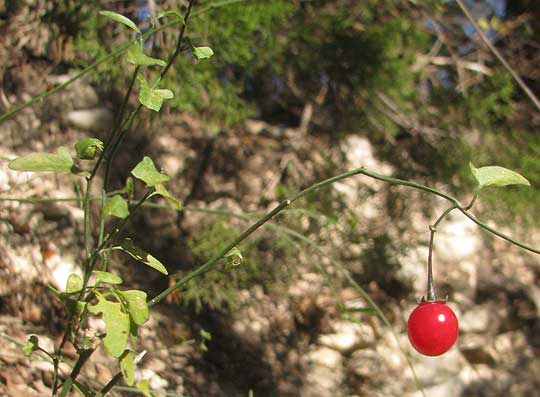
At first I couldn't imagine what it might be, but then the squashed fruit expelled the small, pale, flattish seeds shown below:
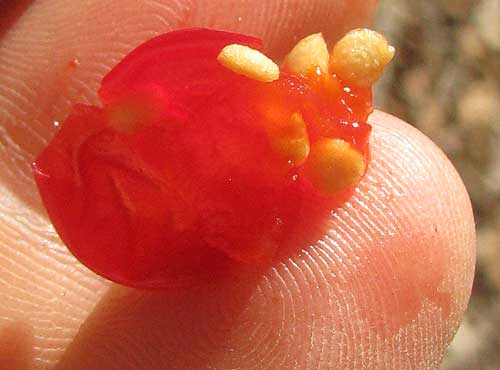
That's just like a tiny tomato. In fact, it's exactly what you might expect in the huge genus Solanum, which is home not only to the tomato and potato, but also many frequently toxic species of nightshades. Solanum belongs to the Nightshade Family, the Solanaceae.
But, if this plant was a Solanum, it was unlike any I'd ever seen. Its semi-woody, green stems scrambled somewhat like viny greenbriar, and its larger leaves were "eared" at their bases, very un-nightshade-like, as shown below:
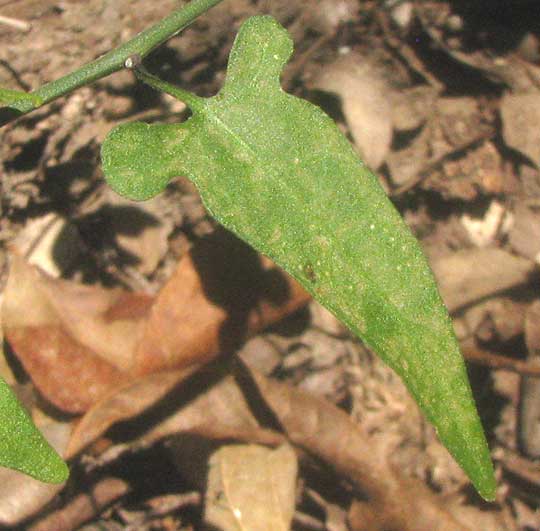
Also I'm accustomed to herbaceous Solanums, but this one had the woody base shown below:
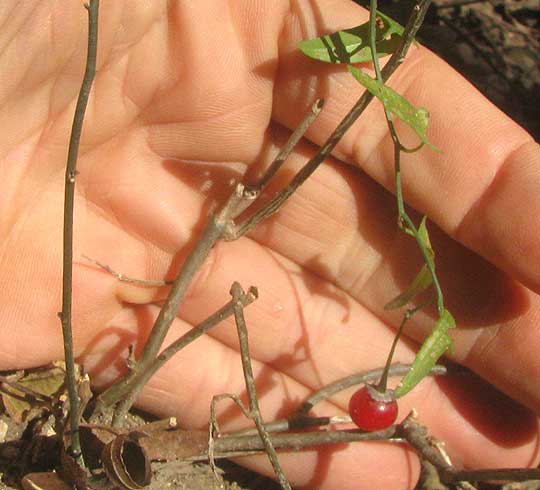
Perplexed, I looked around in hope of finding another plant still in flower, and had the luck to find one. You can see the very distinctive blossom below:

Despite its anomalous stem and leaves, it's a nightshade, after all! With five banana-like anthers forming a nose-like assemblage like that, the style poking up from amidst the anthers, and the five-lobed corolla swooped back -- and with the fruit being so like a tomato -- it couldn't be anything other than a nightshade.
It's the Texas Nightshade, SOLANUM TRIQUETRUM, found only in Texas, a spot in Oklahoma, and arid northeastern Mexico.
Many nightshades are poisonous, though when the fruits mature sometimes they're edible. Our Texas Nightshade's fruit tasted bitter, so I wouldn't advise nibbling on them. I bet small birds relish the tomato-seed-like seeds, though. This is such an uncommon plant that not much is known about it.
It was a good find, and its cherry-red fruit was a delight to discover in our otherwise wintry landscape.
from the March 9, 2014 Newsletter issued from the Frio Canyon Nature Education Center in the valley of the Dry Frio River in northern Uvalde County, southwestern Texas, on the southern border of the Edwards Plateau; elevation ~1750m (~5750 ft); N29.62°, W99.86°; USA
TEXAS NIGHTSHADE ON A CHAIN-LINK FENCE
In December we looked at the Texas Nightshade, SOLANUM TRIQUETRUM, which was both flowering and fruiting on a steep roadcut through limestone in an isolated area {see above}. At that time my impression was that the species might be specially adapted for that kind of habitat, and a late blossomer. I was surprised this week in Uvalde, then, to find it both flowering and fruiting as it entangled itself in a chain-link fence along a sidewalk. You can see its flowers below:
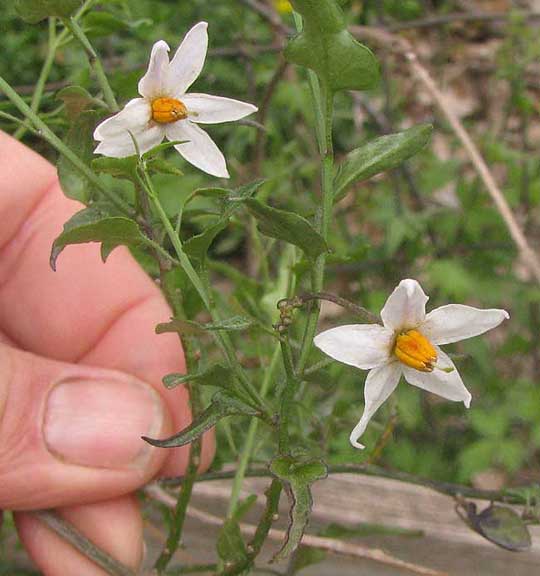
A close-up of its banana-like anthers is below:
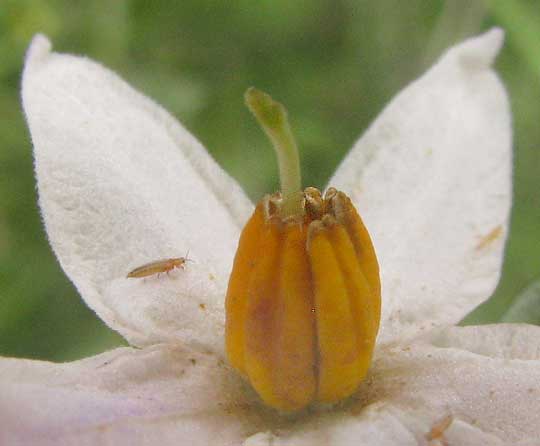
That picture nicely shows how the anthers open with pores at their tips, not with slits along their sides like most anthers. Anther-tip pores are typical of the huge nightshade genus Solanum.
Texas Nightshade seems to be a tough plant able to thrive under a variety of conditions, and only now am I realizing how viny it can be.